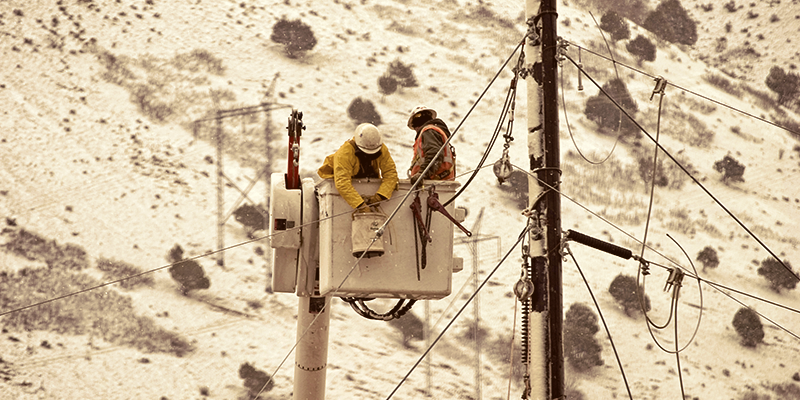
Unforeseeable meteorological calamities require a preparedness and responsive plan to help businesses minimize their costly impact. Currently, extreme conditions have been remarkable in the United States, as an impressively prolonged cold front is affecting organizations not prepared for the freezing temperatures. The consequences of being unprepared are expensive production disruptions and major damage on property which can be prevented by utilizing thermal imaging cameras.
Thermal imaging cameras are a valuable and reliable diagnostic tool for industrial applications. They record the intensity of radiation of a spectrum and convert it into a visible image that can accurately inform the operation/security team of important events, such as:
- Anomalies
- Maintenance requirements
- Electrical or mechanical failures
- Machines exceeding a temperature threshold.
Predictive maintenance program
When such crucial information becomes timely available, it is possible to create a thorough Predictive Maintenance Program and take corrective actions that can avoid complete system failures or even fire in the premises. Non-contact thermal imaging cameras can scan and visualize temperature distribution of entire surfaces of machinery and electrical equipment in an extraordinary and efficient manner, helping businesses always keep plants operational and save money in fixing pricey and preventable breakdowns. When owners have the capability of solving problems before the production flow is affected or a fire is started, they can better control the ruthless effects of weather emergencies on their business.
IR thermometers vs. thermal imaging cameras
Frequently, organizations employ infrared thermometers to identify plant irregularities. However, they only work for single spot temperature readings, which overlook large areas or components data. On the other hand, thermal imaging cameras are capable of scanning, instantaneously, entire machinery, components, or panels without missing any of the critical information needed to prevent a malfunction.
Factors to evaluate
Appropriate hardware, as well as software are necessary. Businesses must choose the best thermal imaging camera devices with good camera resolution for their needs; and have a system capable of analyzing the thermal images and alerting management of every situation. Further, it is suggested to consider training and support. Specifically, expert maintenance services might be needed since cameras should be calibrated regularly.
Part of an emergency plan should include:
- Careful observation of weather forecasts
- Implementation of a thermal imaging camera system
- Delegate responsibilities and protocols
- Reflect on past emergency experiences and adjust.
Hazardous weather can close facilities, delay production, increase operation costs, and stimulate machinery failures. With the implementation of a thermal imaging camera system this can be avoided. They are the perfect instrument to predict operational catastrophes and keep industrial plants functioning unceasingly.
